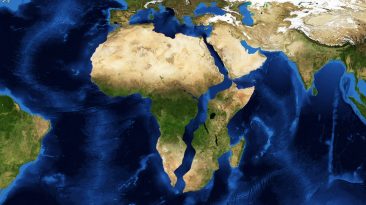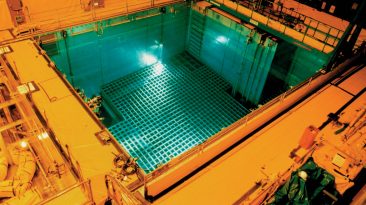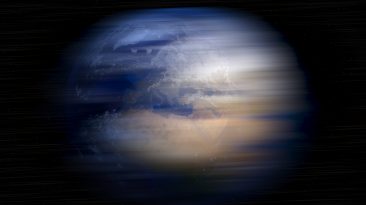The Earth sits comfortably in its orbit tilted on its axis at 23 degrees. Knock the planet over – and it wouldn’t be the Earth as you know it.
Long frigid nights followed by devastatingly blazing days; wiping out any signs of life for good. How can a slight change in its axial tilt make the planet uninhabitable?
Only two planets in the Solar System lie on their sides – Uranus and the dwarf planet Pluto. Now, if something took the Earth off its stand, the blue planet would have no chance of developing any complex life on its surface.
But let’s start at the beginning. This axial tilt, or obliquity, is what drives the seasons here on Earth.
Before the collision that created the Moon, the Earth’s axis was slowly wobbling around somewhere between 0 and 85 degrees. Then, our newly formed Moon stabilized it at about 23 degrees.
But if that collision happened at a different time, things would turn out very different here on Earth. It would be a strange new world, and you wouldn’t want to live there.
[dx_custom_adunit desktop_id=”RTK_CDE4″ mobile_id=”RTK_SUFd”]As the Earth made its way through orbit, its poles would be pointing straight towards the Sun. One hemisphere would be shrouded in darkness for six months straight, while the other would be getting cooked by the blazing sunlight. One day on Earth would last a whole year.
Are you one of those people who always complains about the weather? Well you wouldn’t like it on this hypothetical Earth. No one would.
At the North Pole, the daytime temperatures would rise to a broiling 50°C (120°F). A day at the South Pole would be even worse. Because the South Pole would be located away from climate-controlling ocean currents, it would heat up to an almost boiling 80°C (176°F).
The poles would soak up so much heat from the Sun, that they wouldn’t even freeze over during the six-month-long night.
You wouldn’t recognize the steaming equatorial tropics. With a 90-degree axial tilt, part of the equator would stay encased in ice all year round.
At some point in this Earth’s existence, our continents would get clumped together around one of the poles. Inland temperatures in the daytime would get truly hellish – reaching the boiling temperature of water.
Clouds could help the situation and not let all the water vapor off the planet, but you wouldn’t know. You wouldn’t stick around that long. In this scorching heat, the best-case scenario would see just a few kinds of bacteria survive.
Those bacteria might evolve into more complex life forms, but they wouldn’t be anywhere close to how complex we turned out to be. And their evolution would take billions of years.
The reason would be a lack of oxygen. Green plants would be having a hard time surviving during the six months of complete darkness. They would drop their seeds at nightfall to grow after sunrise. But in such conditions, would they even have evolved in the first place?
Interestingly enough, if the Earth was 60 million km (40 million miles) further away from the Sun, a 90-degree axial tilt wouldn’t be so bad. The temperatures at the poles would never raise above 46°C (115°F) during the day.
The coldest it would get at night would be 3°C (37°F). The only place covered with ice would be the highest mountains.
So you see, simply orbiting a star in the habitable zone doesn’t mean that a planet is actually capable of sustaining life. We’re the lucky ones living here on Earth. Maybe one day we’ll discover another exoplanet, just like our home.
Subscribe to What-If on Youtube or follow the show on Facebook Watch.
Sources
- “Not All Habitable Zones Are Created Equal”. Moomaw, Bruce, 2019. spacedaily.com. Accessed February 20 2019.
- “How Would Earth’s Climate Differ If It’s Axis Were Tilted Around 90 Degrees Like Uranus?”. Astronomy Stack Exchange. Accessed February 20 2019.
- “Climates If Earth Had Large Axial Tilt (45 Or 90 Degrees)”. Climates, and Sean Raymond. 2016. Worldbuilding Stack Exchange. Accessed February 20 2019.
- “High Planetary Tilt Lowers Odds For Life? – Astrobiology Magazine”. Adam Hadhazy, Astrobiology Magazine Contributor. 2012. Astrobiology Magazine. Accessed February 20 2019.
- “Loss Of Planetary Tilt Could Doom Alien Life – Astrobiology Magazine”. Adam Hadhazy, Astrobiology Magazine Contributor. 2012. Astrobiology Magazine. Accessed February 20 2019.



























